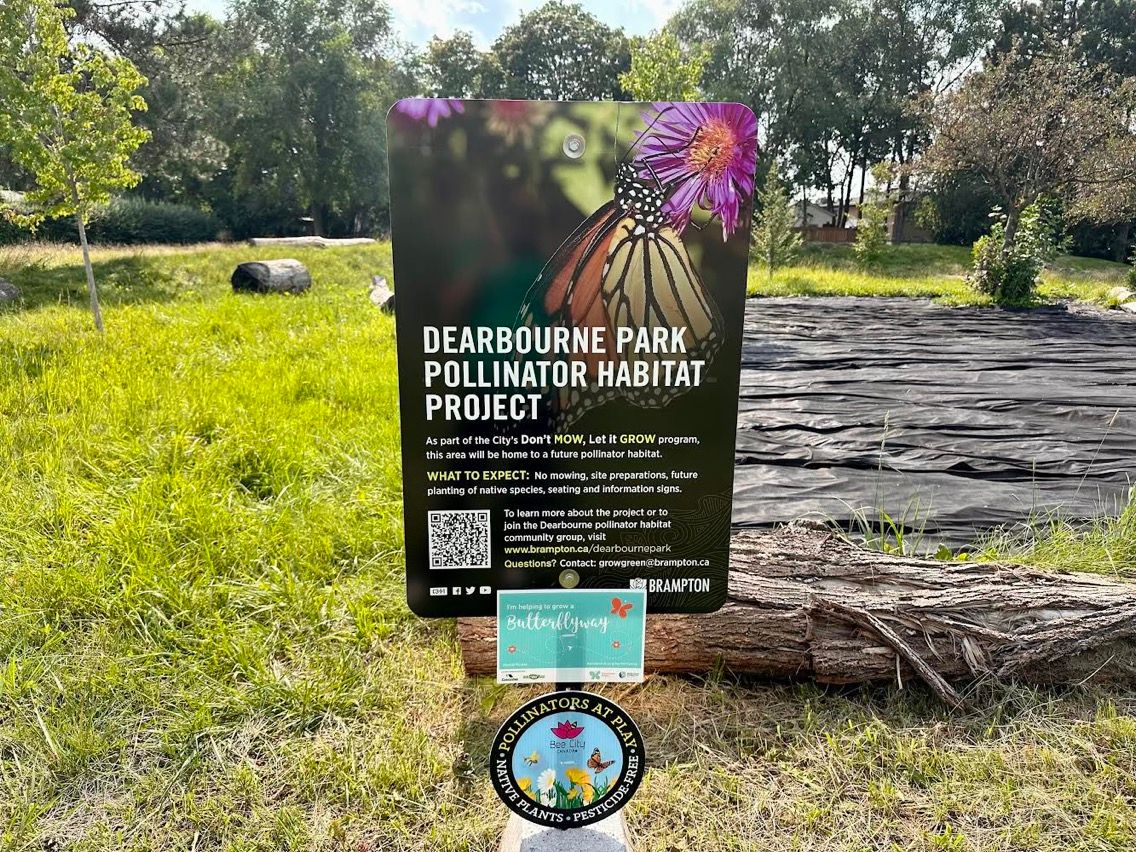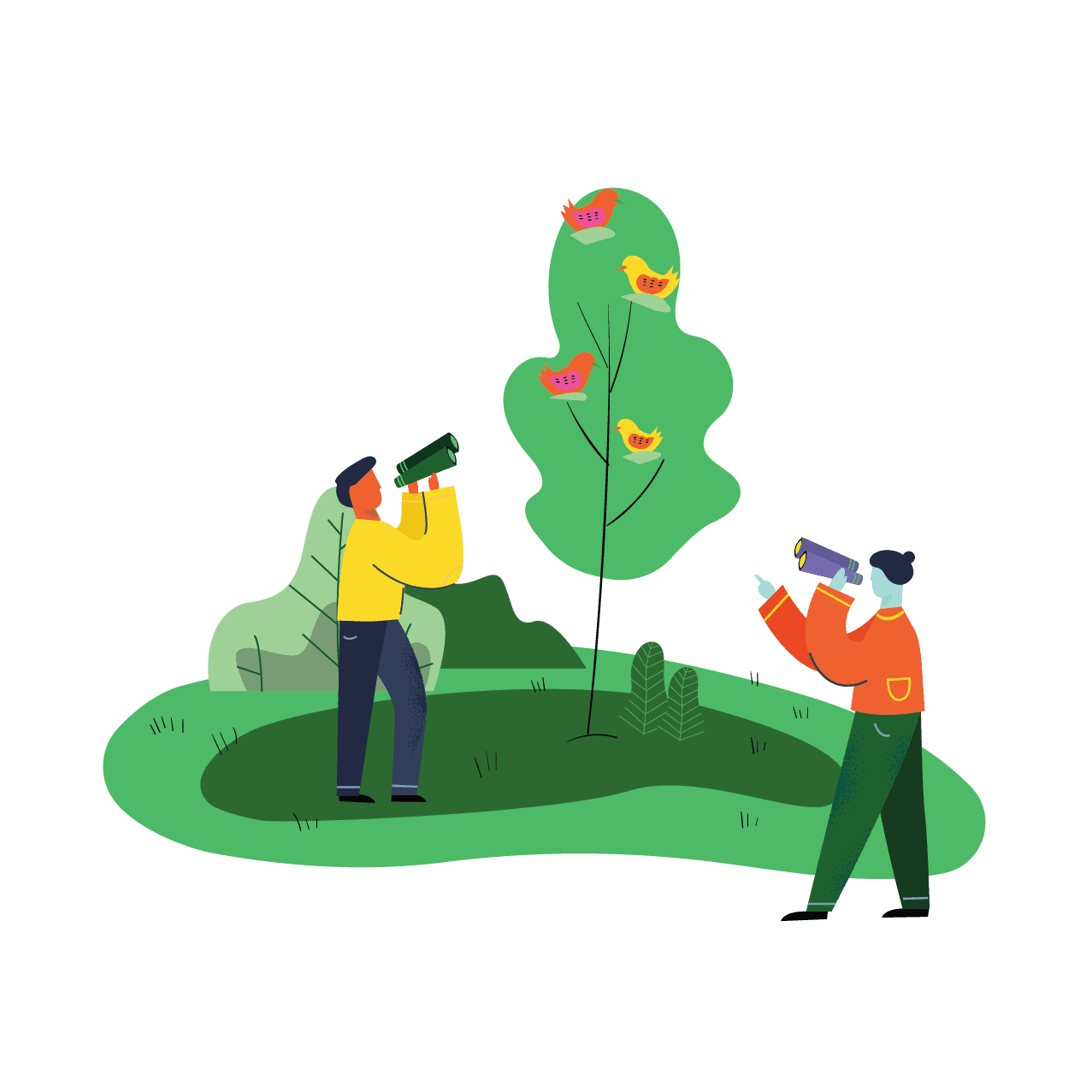- Naturalization projects, while offering key social and environmental benefits, can also trigger community concerns due to the potential loss of park space for other activities and worries about the visual appearance of these spaces.
- Brampton uses a citywide strategy as well as a point scoring system to locate suitable space in parks for naturalization projects in collaboration with community stewards to ensure well-informed decisions.
- To address challenges associated with naturalization projects, focus on early internal staff buy-in, community involvement in site selection, stewardship programs, and communication with clear signage.
More cities across Canada are prioritizing the naturalization of existing parkland. Converting manicured parkland into natural meadows has multiple benefits including increasing climate resilience, biodiversity, and nature connection for residents.
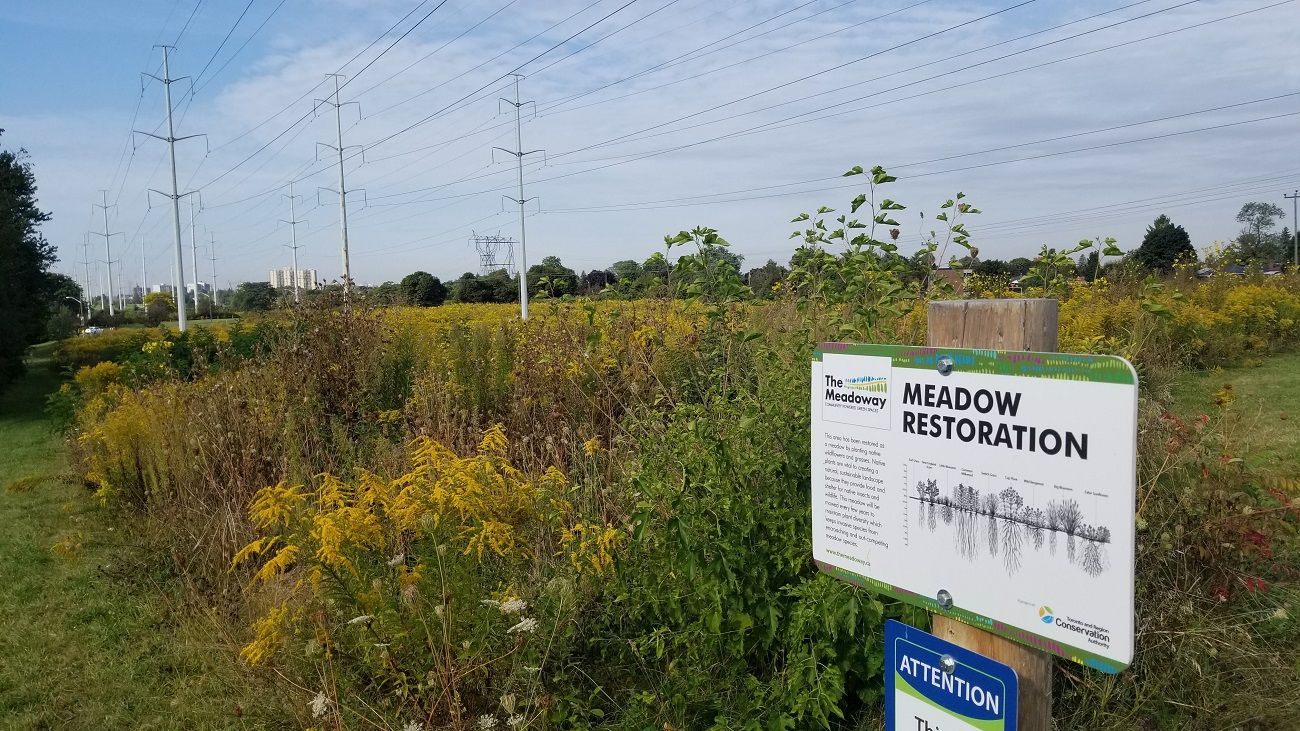
However, these projects have also proven controversial. For example, Vancouver’s “no-mow” pilot project, which naturalized certain sections of parks, was met with opposition by some residents who viewed the spaces as unkempt–a challenge that many other cities in Canada have reported facing.
Karley Cianchino thinks a lot about park naturalization. As City of Brampton Environmental Project Specialist, Cianchino’s job is to plan parks collaboratively with communities through the lens of nature.
Brampton prioritizes naturalization projects using its unique Eco Park Strategy–a citywide strategy that contains principles for conserving and enhancing both natural and cultural heritage. The strategy includes a helpful tool in understanding how to plan spaces, situating them on a scale from highly naturalized systems to high functioning social systems, recognizing that most places are a blend.
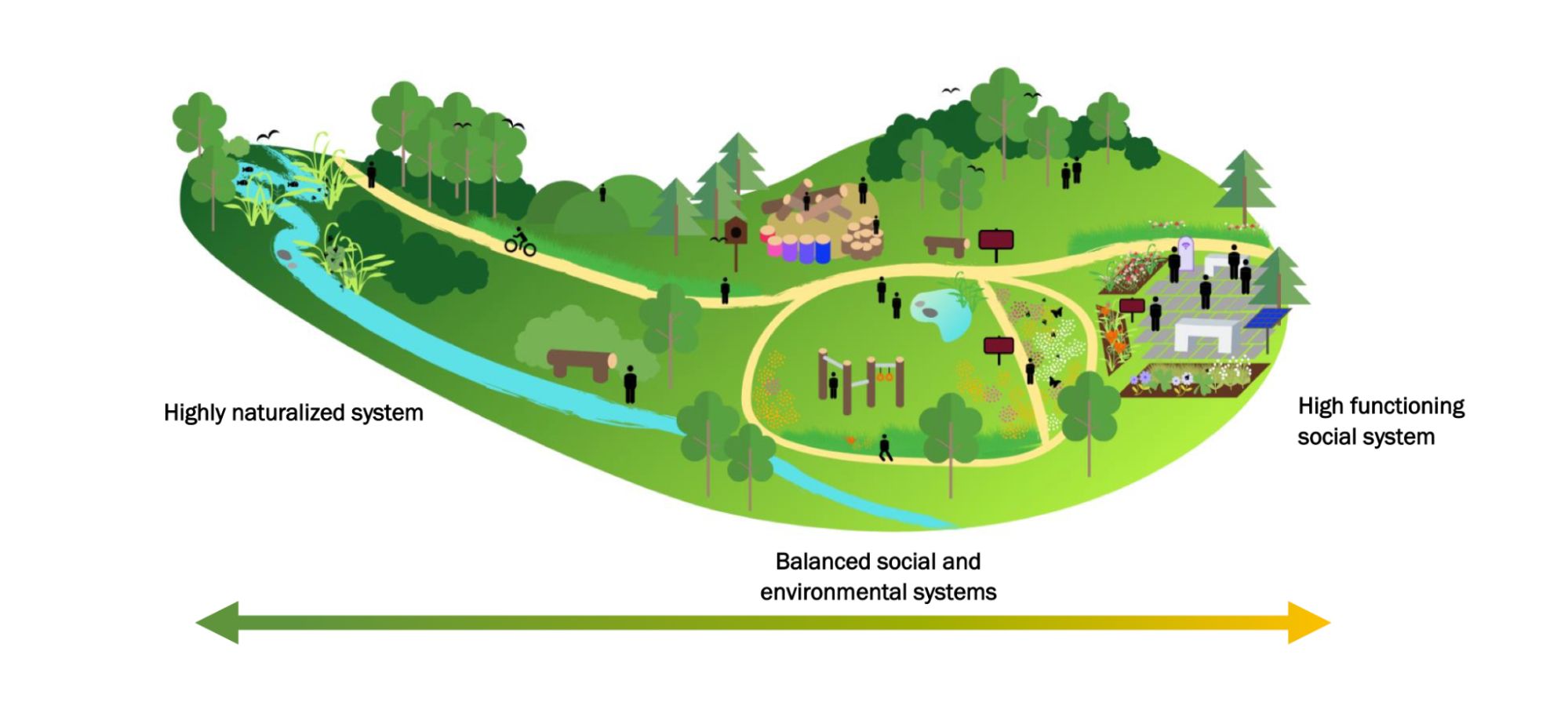
The city also uses a scoring system which grades parks on their social, cultural and environmental attributes. This then helps the city prioritize which improvements are needed where.
For example, “if a park has a low environmental score, then we’ll look for opportunities to bring some restoration work forward,” Cianchino said.
No matter how good they are, strategies have a habit of sitting on a shelf gathering dust. To ensure that doesn’t happen, Cianchino said that she does a lot of internal coordination, including a bi-monthly Eco Park meeting, as well as “casual conversations” with colleagues about new projects and discussing how to incorporate the Eco Park objectives. For example, if a park is undergoing upgrades, perhaps that’s an opportunity to incorporate naturalization work. This approach not only minimizes redundant community engagement and resource allocation but also enhances synergy between projects.
Not all of these projects go off without a hitch, however. Recently the city naturalized a large section of Dearbourne Park–the first time the city had brought its naturalization program to a busy neighbourhood park. It wasn’t received well, Cianchino said, with residents pointing out they had lost park space they used for other activities.
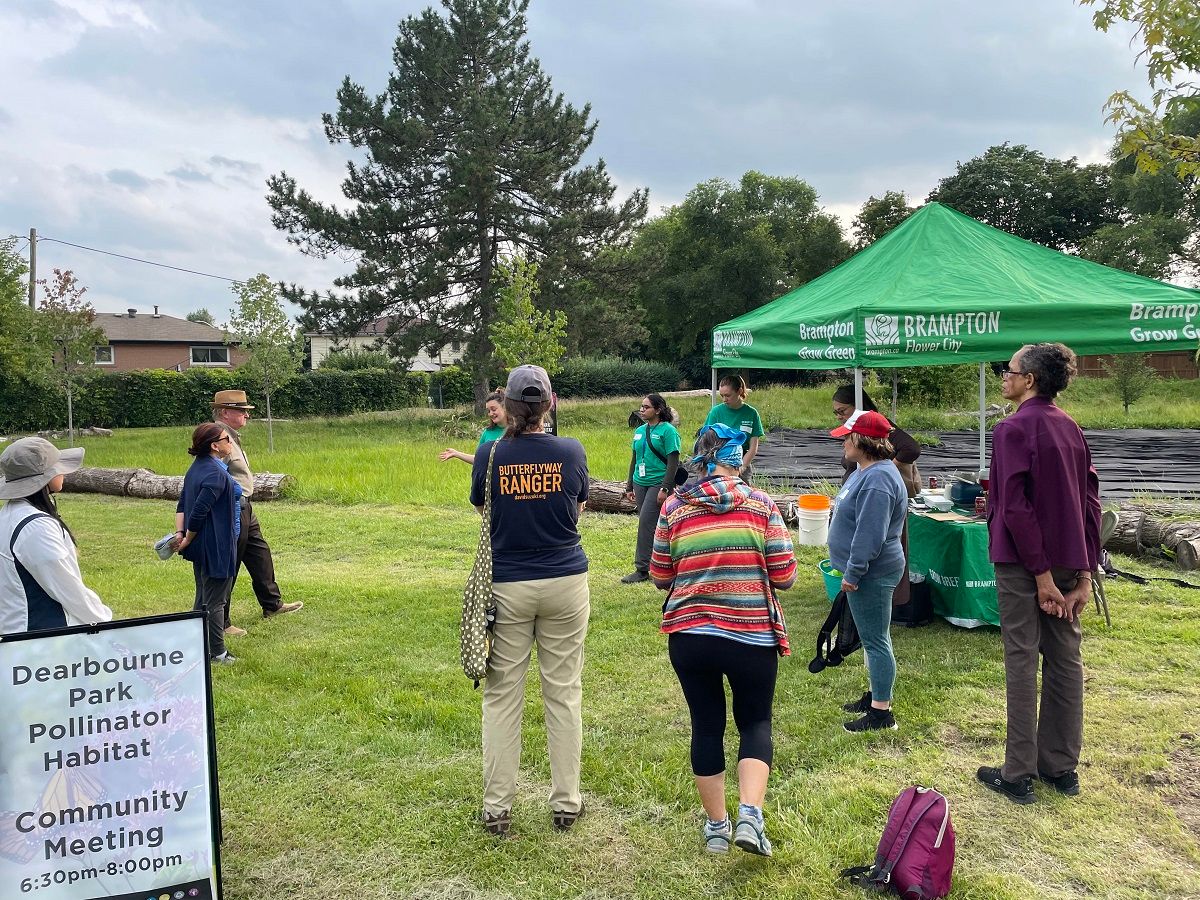
The city held a community meeting with residents who selected a smaller 10,000 square foot space in the park to be a programmed pollinator habitat, which would be stewarded by the community group Cianchino created with ongoing support from the city. In the future Cianchino said she wants to implement a QR code system in locations identified for potential naturalization asking residents to let the city know how they currently use the space.
Supporting community stewards will be a key part of the project's ongoing success. Working with volunteers, Cianchino led the group’s first “bio blitz,” where residents measure the number of pollinators before the planting of native species this fall. Cianchino also works with the group to discuss what people can do in their own yards to support naturalization efforts. The core of the Eco Park Strategy, she said, is a series of linked habitats and green corridors
“and you can't just do that through public land. It's critical that we educate landowners and help them build capacity to naturalize their spaces in a manner that works for them.”
- Ensure both internal staff and community consultation on locations for naturalization projects to minimize challenges regarding operational issues and community buy-in.
- Provide local councillors with education on naturalization benefits as well as common concerns so they’re able to speak to residents confidently and answer questions.
- Pair naturalization projects with community stewardship opportunities to bring more residents into the project longer term and foster a sense of shared responsibility over the new spaces.
Further reading
- Brampton’s interactive Natural Heritage Restoration Map, which educates the public about where naturalization projects are taking place.
